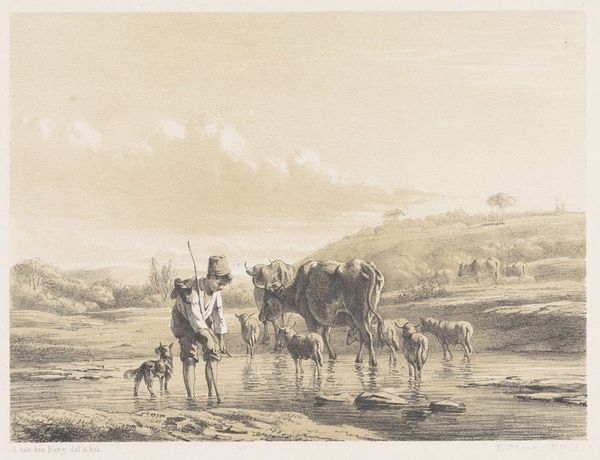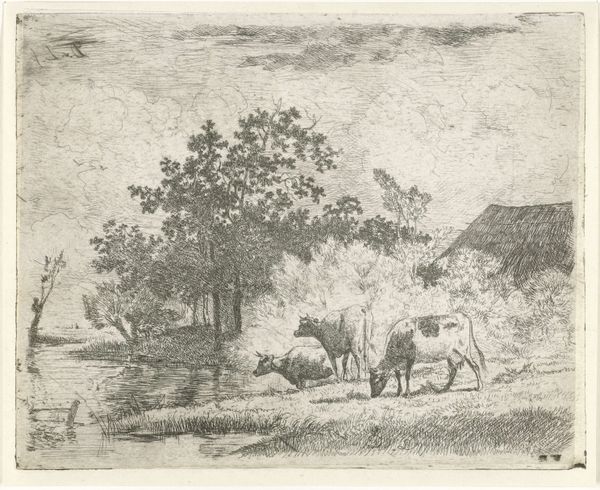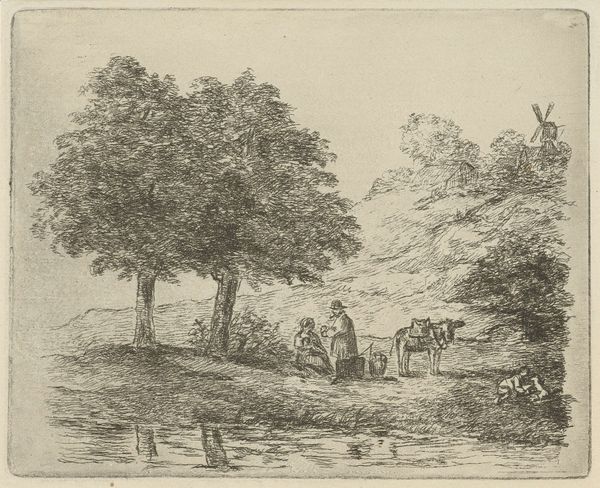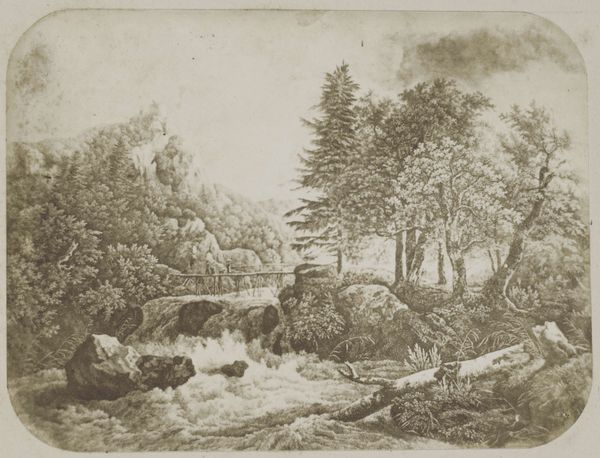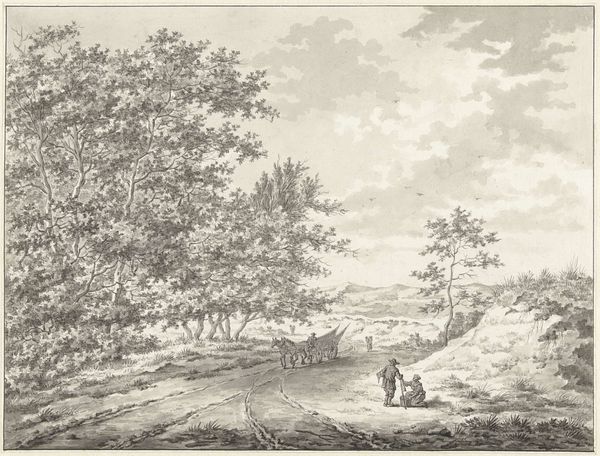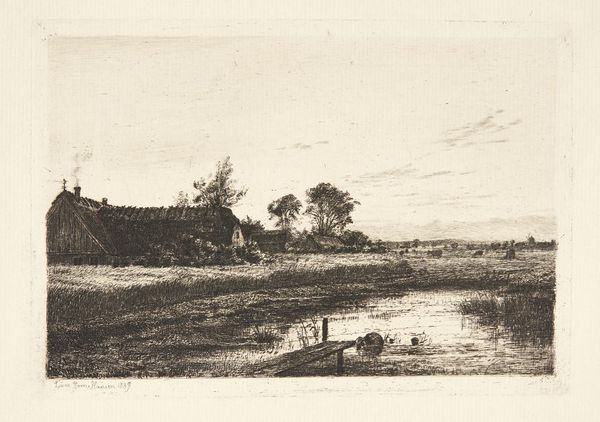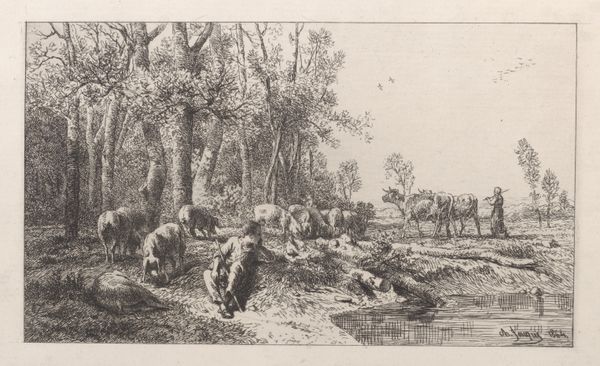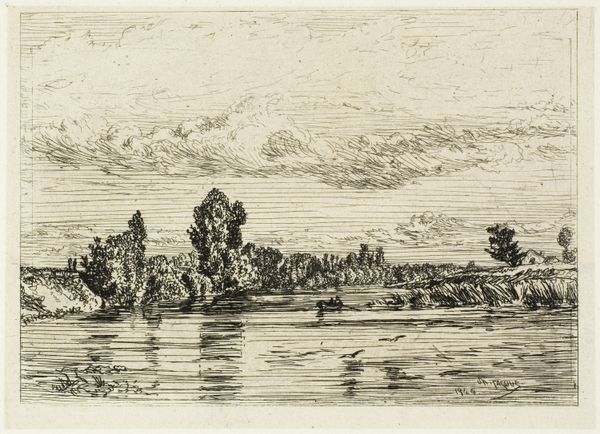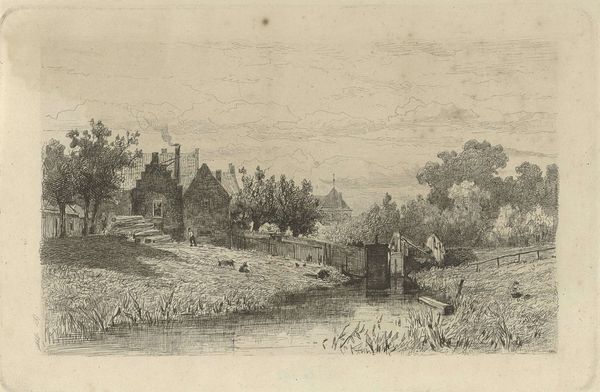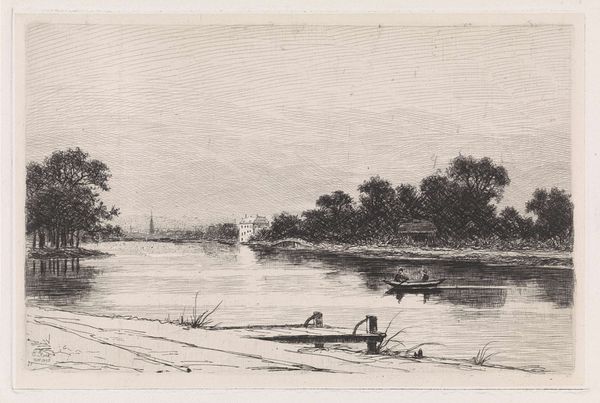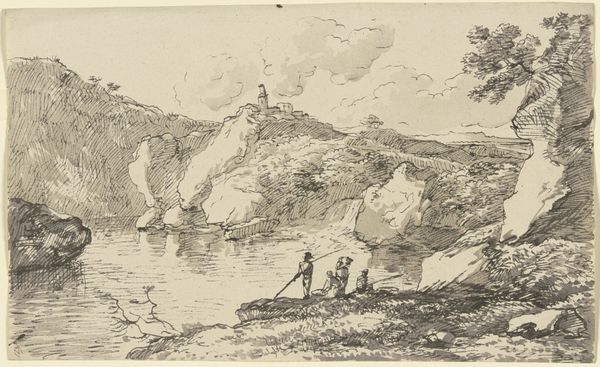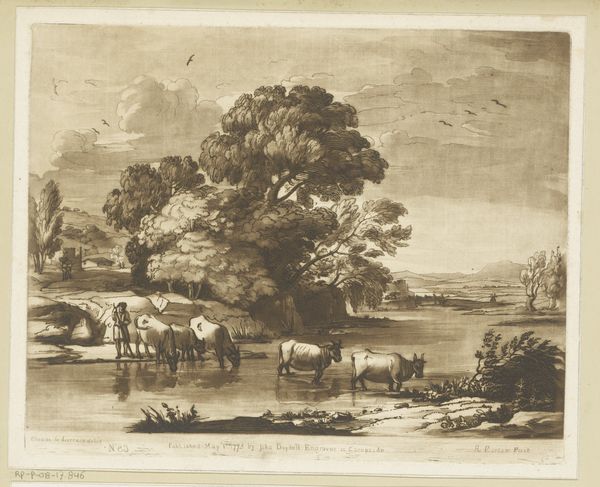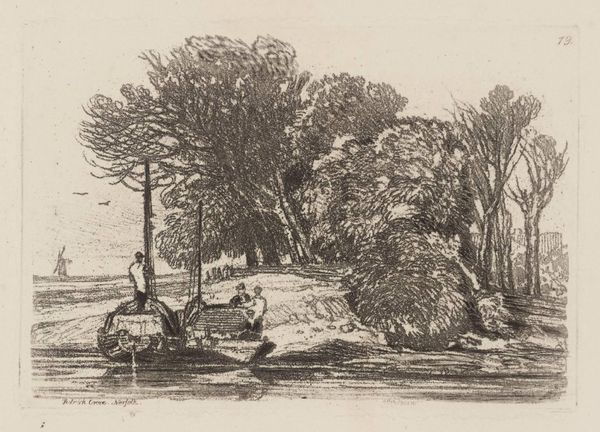
drawing, print, etching, paper
#
drawing
# print
#
etching
#
landscape
#
etching
#
paper
#
romanticism
#
genre-painting
#
realism
Dimensions: 111 × 198 mm (image); 116 × 205 mm (chine); 121 × 206 mm (plate); 301 × 425 mm (sheet)
Copyright: Public Domain
Curator: Looking at this etching, the detail is incredible. You can almost feel the weight of the day, of the labor. Editor: Yes, there’s a stillness too. Before we dive in, what exactly are we looking at? Curator: This is Charles Jacque's "Landscape with Farm Laborers," dating back to 1845. The Art Institute of Chicago holds this print, skillfully executed as an etching on paper. Editor: Ah, so Jacque is interested in this interplay between man, animal, and earth— the material reality of producing something. There's almost a direct connection to the soil represented by this rough texture achieved with this technique. Curator: Indeed. It’s hard not to think about the broader shift in artistic representations of rural life occurring in the mid-19th century. We're seeing a rise in realism, but there's also a persistent thread of romanticism, a glorification of the simple life, perhaps. How were these images used? For whom were they intended? The imagery shaped ideas about country life as more and more people left rural environments. Editor: Absolutely, consider how the rise of industrial printmaking, etching in particular, allowed images like these to circulate widely. Reproductions created for mass consumption further shaped ideas of work and identity. The work then wasn't just done in the field, but carried on in homes or factories reproducing prints like this. Curator: Precisely. And looking closer, one can't help but note the somewhat idealized portrayal of these laborers. There is back-breaking toil represented, certainly, but it's softened, almost picturesque. A question for art institutions: how does showing works like these reinforce or challenge common beliefs about rural economies and laborers? Editor: Right. Whose story are we telling, and whose labor are we acknowledging—the field hands, the artisan creating the plate, the printer, the institutions that house this print. There are so many sets of hands that give us this image. Curator: Fascinating food for thought. Thanks to Jacques' technical mastery, we can reflect more deeply about social class, materiality, and cultural transmission within the art world and society. Editor: A really crucial piece in how we view our relationship with production. An insightful consideration on labor as viewed and represented.
Comments
No comments
Be the first to comment and join the conversation on the ultimate creative platform.
